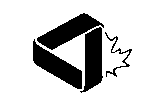|
|

|

|

|
|
Ordered Groups / Groupes ordonnés
(Akbar Rhemtulla, Organizer)
- STEVEN BOYER, Department of Mathematics, UQAM, Montreal, Quebec H3C 3P8
Orderings of 3-manifold groups
-
(joint work with Dale P. Rolfsen and Bert Wiest)
We investigate the relationship between the topology of a compact,
connected 3-dimensional manifold M and the left-orderability of its
fundamental group p. Without loss of generality we restrict to
irreducible 3-manifolds. Some sample results are:
Theorem 1. If M is non-orientable and \mathbbRP2-irreducible, or orientable and its first Betti number is positive, then pis LO.
Corollary. All classical knot and link groups are LO.
Standard techniques show that the left-orderability of p is equivalent
to the existence of certain types of laminations in M and sometimes this
can be considerably strengthened.
Theorem 2. A Seifert fibred manifold whose first Betti number is zero has a LOgroup if and only if it is the 3-sphere or it has an infinite fundamental group, an orientable base orbifold, and it admits a codimension-1 foliation which is everywhere transverse to the circle fibres.
We have been able to completely classify which Seifert fibre spaces and
Sol manifolds have LO groups, and which have bi-orderable groups.
Time permitting we will discuss the virtual left-orderability problem
for p and its connection to some classic conjectures in
3-manifold topology.
- PATRICK DEHORNOY, University of Caen, France
Gaussian groups are torsion-free
-
We give an elementary, purely algebraic proof of the result that
Artin's braid groups are torsion-free. The argument only uses the fact
that these groups are groups of fractions of monoids in which least
common multiples exist, and it applies to every such group (``Gaussian
group''). A combinatorial transformation called word reversing is
crucial in the proof.
- JUAN GONZALEZ-MENESES, Facultad de Matematica, Universidad de Sevilla, C/Tarfia s/n,
41012 Sevilla, Spain
Ordering pure braid groups on closed surfaces
-
We will show that the pure braid group on a closed surface is
bi-orderable if and only if the surface is orientable. This will allow
us to exhibit several techniques for proving (or refuting) ordering
properties of groups. We will also talk about what is known about
order on braid groups.
- PETER LINNELL, Department of Mathematics, Virginia Tech, Blacksburg,
Virginia 24061-0123, USA
Left ordered and locally indicable groups
-
A group G is left ordered means that it has a total ordering £
such that x £ y implies gx £ gy for all g,x,y Î G. Let
Aut(\mathbb R) denote the group of orientation preserving
homeomorphisms of \mathbb R. Then if G is countable, it can be
shown that G is left orderable if and only if it is isomorphic to a
subgroup of Aut(\mathbb R). Thus we have two ways of viewing
left ordered groups; the first way is fairly algebraic, whereas the
second way is more analytic and topological.
In my talk I will discuss these two approaches, and in particular will
apply them to the problem of when a left ordered group is locally
indicable. Recall that a group is locally indicable if and only if
every nontrivial finitely generated subgroup maps onto the infinite
cyclic group \mathbb Z. Every locally indicable group is left
orderable, and the converse statement was open for a long time.
Results of Chiswell, Kropholler, Rhemtulla and Tararin showed that many
left ordered groups are locally indicable, but Bergman and Tararin
about a decade ago showed that the converse is false. Using results of
Dehornoy, Fenn, Greene, Rolfsen, Rourke and Wiest, one now has many
examples to show that the converse is false. However all known
counterexamples contain a nonabelian free subgroup. I will show that
for a large class of groups which do not contain a nonabelian free
subgroup, every left ordered group is locally indicable.
- AKBAR RHEMTULLA, University of Alberta, Edmonton, Alberta T6G 2G1
Which classes of right orderable groups are locally indicable?
-
A group G is called right ordered or an order preserving
permutation group if the elements of G can be totally ordered in
such a way that multiplication on the right preserves the order. It
has been known for a long time that locally indicable groups (these are
groups where every finitely generated non-trivial subgroup has an
infinite cyclic quotient) are right orderable. The converse is not
true, but this fact took a long time to demonstrate. I will present
known and some new results on the classes of groups where right
orderability and local indicability are coincide.
- DALE ROLFSEN, University of British Columbia, British Columbia
Group orderings respecting automorphisms, with applications
-
If f: G ® G is an automorphism, G an orderable group,
one might ask if there exists an ordering < of G which is invariant
not only under multiplication (on one or both sides), but also under
f, meaning g < h iff f(g) < f(h). This may not be
possible (for example if f has a finite orbit), but we are able to
give some general sufficient conditions for such an ordering to
exist-in particular, if G is a free group and f satisfies
certain hypotheses. Three topological applications will be discussed:
1. A natural bi-ordering of the pure braid groups.
2. Nonorientable closed surfaces have bi-orderable fundamental
groups iff they are hyperbolic, i.e. have negative Euler
characteristic.
3. The group of a fibred knot is bi-orderable if all the roots
of its Alexander polynomial are real and positive.
This represents collaborative work with Steve Boyer, Djun Kim,
Bernard Perron and Bert Wiest.
- BERT WIEST, Department of Mathematics/PIMS PDF, University of British Columbia,
British Columbia
Orderings of mapping class groups after Thurston
-
This is (quite old) joint work with Hamish Short. We are concerned with
mapping class groups of hyperbolic surfaces with nonempty boundary. We
present a very natural method, due to Thurston, of finding many
different left orderings of such groups. The construction uses the
action of the mapping class group on the boundary of the universal
cover (viewed in H2), including its limit points on the
circle at infinity. We classify all orderings of braid groups which
arise in this way. Moreover, restricting to a certain class of
``nonpathological'' orderings, we prove that there are only finitely
many conjugacy classes of such orderings.
- PETER ZVENGROWSKI, Department of Mathmatics, University of Calgary, Calgary,
Alberta T2N 1N4
Fundamental groups of Seifert manifolds
-
Any finitely presented group can be the fundamental group of a four
dimensional manifold, but only certain ones can be fundamental groups
of three dimensional manifolds. One important class of this type are
the fundamental groups of the Seifert manifolds. We shall consider the
orientable Seifert manifolds. The cohomology of these manifolds is
(apart from a small number of exceptions) the same as the cohomology of
the group, so is interesting from both the algebraic and the toplogical
points of view. It has been computed, as a ring and with Zp
coefficients, over the past 5-6 years, and most recently also with Z
coefficients. These results will be presented, and a couple of
applications will be mentioned.
|
|




